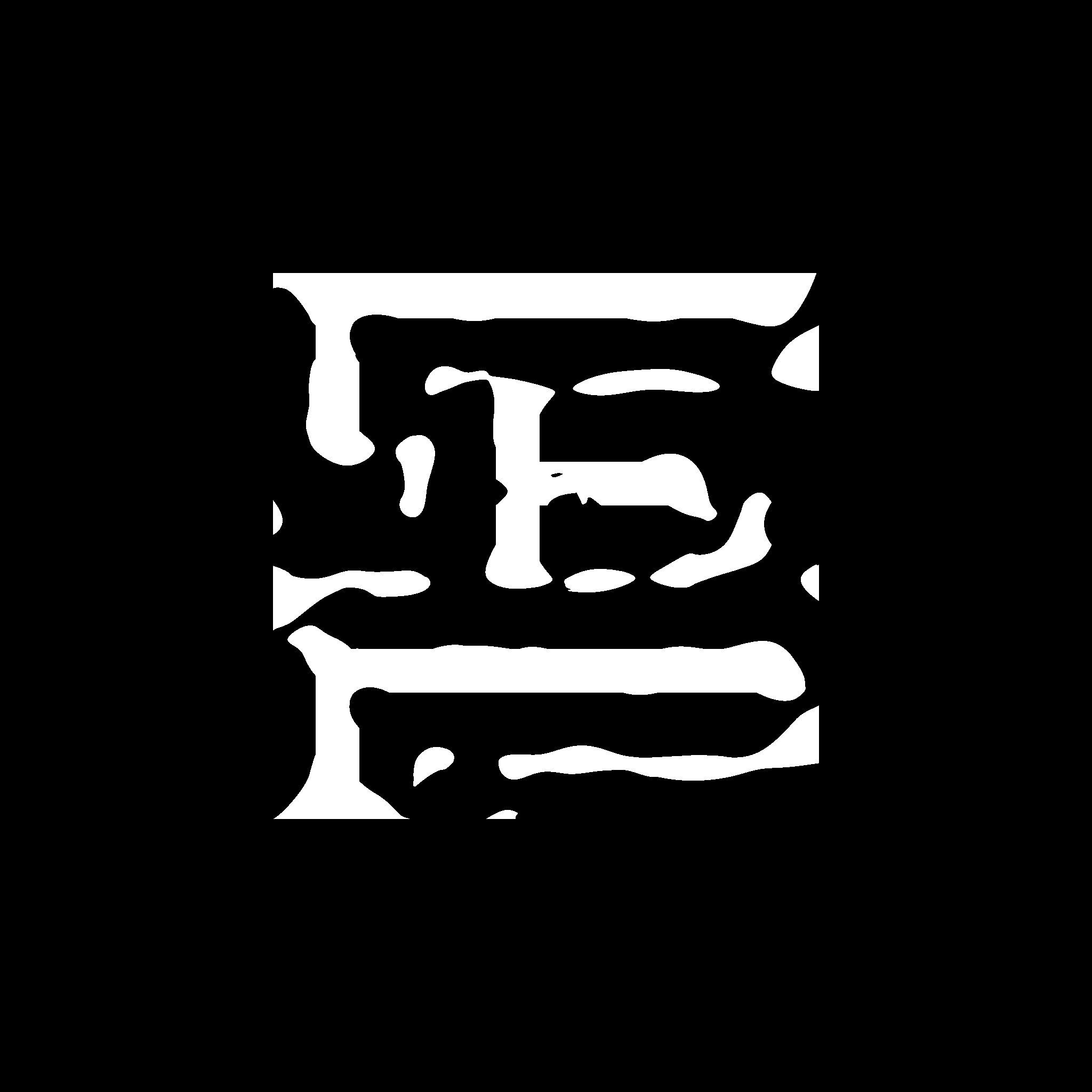____ ____ __ ______
/ __ \ ____ ___ ____ / _// / /_ __/
/ / / // __ \ / _ \ / __ \ / / / / / /
/ /_/ // /_/ // __// / / / _/ / / /___ / /
\____// .___/ \___//_/ /_/ /___//_____//_/
/_/
OpenILT is a open-source platform for inverse lithography technology (ILT) research. It has a comprehensive and flexible ecosystem of libraries that enable the efficient development and evaluation of ILT algorithm. OpenILT decouples the ILT flow into different components, lithography simulation, initialization, optimization, and evaluation. ILT researchers can implement and evaluate their ideas quickly by replacing a component with the novel method. Moreover, the platform is implemented with pytorch, which enables easy GPU acceleration and deep-learning integration.
If you manage your python environments with anaconda, you can create a new environment with
conda create -n openilt python=3.8
conda activate openiltTo install the dependencies with pip, you can use
pip3 install -r requirements_pip.txtYou may install the dependencies with conda:
conda install --file requirements_conda.txt -c pytorch -c conda-forgeHowever, due to the complex environment solving, the process may be slow and the installed packages may be unsatisfactory. For example, you may get a CPU version of pytorch. Thus, if you want to use conda, you may install a GPU version of pytorch before you install other dependencies.
Note that we develop OpenILT with python 3.8 and pytorch 1.10. We also tested OpenILT with pytorch 2.0. The system we use is Ubuntu 18 with Intel Xeon CPUs and NVIDIA GPUs. We also tested the program on CentOS 7.
The python package adaptive-boxes is needed for shot counting. You can install the package in the thirdparty/adaptive-boxes folder.
cd thirdparty/adaptive-boxes
pip3 install -e .
You can test the ILT methods in OpenILT with the following commands:
SimpleILT
python3 pyilt/simpleilt.py
The final mask images will be saved in tmp/.
You are probably using the CPU version of pytorch. Please install a GPU version of pytorch.
In addition, the shot counting process is quite slow if the pattern is complex. Thus, you may delete the shot counting to make it faster.
shot = 0 # shotCount.run(bestMask, shape=(512, 512))
Please use pytorch>=1.8.0.
Please use scipy>=1.9.0.
You may add the following code at the beginning of the python file.
import os
os.environ['KMP_DUPLICATE_LIB_OK']='True'
Over the past few decades, the feature size of the integrated circuit has been continuously shrinking in accordance with Moore’s Law. As a result, it becomes more and more challenging to acquire high pattern fidelity and mask printability due to the non-neglectable lithography proximity effect. Moreover, the printed wafer image becomes highly sensitive to minor variations of the lithography conditions.
Inverse Lithography Technology (ILT) as an important OPC method, treating the mask optimization as an inverse problem of the imaging system. It aims at optimizing the carefully designed objective function and adjusting the pixel-wise mask backwards. A variety of attempts have been made in ILT to improve both the printed pattern fidelity and the process robustness. Representative works on ILT include:
(1) Numerical methods: MOSAIC [1], GPU-LevelSet [2,3], CTM-SRAF [4], etc.
(2) GAN-OPC [5,6], Neural-ILT [7,8], DAMO [9,10], Devel-Set [11], etc.
ILT is an active reserach field where various works are published every year. Although there exist a popular ICCAD13 benchmark [0] and widely adopted metrics like L2 loss, EPE, PVBand, shots, runtime, etc., we are in lack of a common platform that can support the fast development and evaluation of ILT methods under specified settings.
Optical projection model Photoresist model
Mask image -----------------------------> Aerial image ----------------------> Printed image
Transformation Optical projection model Photoresist model
Parameters ------------------> Mask image -----------------------------> Aerial image ----------------------> Printed image
^ |
| Update | Minimize distance
| Back-propagation |
Gradient <---------------------------------------------------------------------------------------------------- Target image
Lithography model: include the optical projection model and photoresist model.
Optical projection model: the Hopskins diffraction model used to simulate a partially coherent imaging system.
Photoresist model: a sigmoid function that simulates development and etching.
Mask image: the input image to the lithography process.
Aerial image: the image after the optical projection simulation.
Printed image: the image after the photoresist process simulation, which represents the image printed onto the wafer.
Target image: the binary image that represents what an ideal printed image should be.
PVBand: Process variability band (PVBand) measures the layout sensitivity to process variations, which indicates a range of feature edge placement among possible lithography process variations.
EPE: Edge placement error (EPE) measures the manufacturing distortion by the difference of edge placement between the final image and the target image under nominal process condition.
We provide two lithography simulator in pylitho/exact.py and pylitho/simple.py.
Both of them implements the lithography models provided by ICCAD13 benchmark [0].
pylitho/simple.py implements the speedup technique in [1] that combines the kernels together in the back-propagation step,
Both pylitho/exact.py and pylitho/simple.py provide the LithoSim class, which is also a torch.nn.Module. We can simlulate the lithography with the Hopskins diffraction model by calling:
printedNom, printedMax, printedMin = self._lithosim(mask)printedNom, printedMax, printedMin are the simulated printed image at the nomial, maximum, and minimum process corners, respectively.
We can design a new lithography simulator by implementing a pytorch Module with a forward function.
We usually use glp files or binary images as the inputs of ILT algorithms. Thus, an initializer is needed to generate the target image and the initial parameters. We can get the target and parameters with some code similar with:
initalizer = Initializer()
target, params = initalizer.run(design, sizeX, sizeY, offsetX, offsetY)The argument design may be a glp file or a image file.
The image size if
We provide two basic initializers, PlainInit, PixelInit, in the file pyilt/initializer.py.
Convert glp file to the target image, and set params = target
Convert glp file to the target image, and set params = 2 * target - 1
CELL 0OBAN_SAIL PRIME
PGON N M1 128 479 341 479 341 214 129 214 129 128 409 128 409 565 128 565
RECT N M1 568 180 90 304
PGON N M1 586 566 727 566 727 475 795 475 795 653 586 653
PGON N M1 128 654 505 654 505 897 862 897 862 128 1097 128 1097 214 930 214 930 654 1097 654 1097 740 930 740 930 978 437 978 437 740 128 740
ENDMSG
PGON and RECT are rectilinear polygon and rectangle shapes, respectively. RECT is represented by x, y and x_offset, y_offset. PGON is represented by a sequence of points.
We provide a typical ILT method, SimpleILT, with GPU acceleration support for faster optimization. We use SGD optimizer from pytorch to do gradient descent. Other builtin optimizers in pytorch or new optimizers can also be adopted.
It implements a simplified version of MOSAIC [1] without the EPE loss and gradient scaling tricks.
It minimizes the L2 loss and the PVBand loss.
We denote the printed images at nominal, maximum, minimum corners with
To use SimpleILT, we should prepare the lithography simulator with:
litho = lithosim.LithoSim("./config/lithosimple.txt")Then instantiate a SimpleILT solver with:
cfg = SimpleCfg("./config/simpleilt2048.txt")
solver = SimpleILT(cfg, litho)The testcase can be loaded via:
SCALE = 1 # downsampling scale in the optimization
design = glp.Design(f"./benchmark/ICCAD2013/M1_test{idx}.glp", down=SCALE)
design.center(cfg["TileSizeX"], cfg["TileSizeY"], cfg["OffsetX"], cfg["OffsetY"])
target, params = initializer.PixelInit().run(design, cfg["TileSizeX"], cfg["TileSizeY"], cfg["OffsetX"], cfg["OffsetY"])Then we can all the solver to get an optimized mask image.
l2, pvb, bestParams, bestMask = solver.solve(target, params)The evaluation code is in pyilt/evaluation.py. We provide three classes for evaluation, Basic, EPEChecker, ShotCounter.
To evaluate the L2 loss
test = evaluation.Basic(litho, 0.5) # litho is the lithography simulator
l2, pvb = test.run(mask, target, scale=SCALE) # SCALE is the scaling factor The interfaces of EPEChecker and ShotCounter are similar to Basic. EPEChecker estimates the EPE and ShotCounter count the shots (rectangles) with adaptive rectangular decomposition (ARD). Note that ShotCounter runs slowly. Thus, we may not usually call shot counting. We can eliminate the shot counting when we need a fast evaluation.
EPEChecker example:
epeCheck = EPEChecker(litho, 0.5)
epeIn, epeOut = epeCheck.run(mask, target, scale=1)
epe = epeIn + epeOutShotCounter example:
shotCount = ShotCounter(litho, 0.5)
shot = shotCount.run(mask, shape=(512, 512)) We can also directly run pyilt/evaluation.py to evaluate ILT results by:
python3 pyilt/evaluation.py <target glp/image> <mask image>These experiments are conduced on RTX3090.
All results are evaluated with a resolution of
| Testcase | L2 loss | PVBand | EPE | Shots |
|---|---|---|---|---|
| M1_test1 | 43408 | 52281 | 3 | 723 |
| M1_test2 | 35326 | 41865 | 2 | 623 |
| M1_test3 | 75428 | 78805 | 43 | 873 |
| M1_test4 | 13649 | 22112 | 2 | 781 |
| M1_test5 | 37330 | 54977 | 2 | 604 |
| M1_test6 | 35711 | 51036 | 0 | 659 |
| M1_test7 | 29566 | 44576 | 0 | 555 |
| M1_test8 | 14327 | 20727 | 0 | 876 |
| M1_test9 | 45347 | 64063 | 0 | 617 |
| M1_test10 | 8404 | 16685 | 0 | 809 |
| Average | 33850 | 44713 | 5.2 | 712 |
[0] Banerjee, Shayak, Zhuo Li, and Sani R. Nassif. "ICCAD-2013 CAD contest in mask optimization and benchmark suite." 2013 IEEE/ACM International Conference on Computer-Aided Design (ICCAD). IEEE, 2013.
[1] Jhih-Rong Gao, Xiaoqing Xu, Bei Yu, David Z. Pan, “MOSAIC: Mask Optimizing Solution With Process Window Aware Inverse Correction”, ACM/IEEE Design Automation Conference (DAC), pp. 52:1–52:6, San Francisco, June 1–5, 2014.
[2] Ziyang Yu, Guojin Chen, Yuzhe Ma, Bei Yu, “A GPU-enabled Level-Set Method for Mask Optimization”, IEEE/ACM Proceedings Design, Automation and Test in Europe (DATE), Feb. 01–05, 2021.
[3] Ziyang Yu, Guojin Chen, Yuzhe Ma, Bei Yu, “A GPU-enabled Level Set Method for Mask Optimization”, IEEE Transactions on Computer-Aided Design of Integrated Circuits and Systems (TCAD), vol. 42, no. 02, pp. 594–605, 2023.
[4] Ziyang Yu, Peiyu Liao, Yuzhe Ma, Bei Yu, Martin D.F. Wong, “CTM-SRAF: Continuous Transmission Mask-based Constraint-aware Sub Resolution Assist Feature Generation”, accepted by IEEE Transactions on Computer-Aided Design of Integrated Circuits and Systems (TCAD).
[5] Haoyu Yang, Shuhe Li, Zihao Deng, Yuzhe Ma, Bei Yu, Evangeline F. Y. Young, “GAN-OPC: Mask Optimization with Lithography-guided Generative Adversarial Nets”, IEEE Transactions on Computer-Aided Design of Integrated Circuits and Systems (TCAD), vol. 39, no. 10, pp. 2822–2834, 2020.
[6] Haoyu Yang, Shuhe Li, Zihao Deng, Yuzhe Ma, Bei Yu, Evangeline F. Y. Young, “GAN-OPC: Mask Optimization with Lithography-guided Generative Adversarial Nets”, IEEE Transactions on Computer-Aided Design of Integrated Circuits and Systems (TCAD), vol. 39, no. 10, pp. 2822–2834, 2020.
[7] Bentian Jiang, Lixin Liu, Yuzhe Ma, Hang Zhang, Evangeline F. Y. Young, Bei Yu, “Neural-ILT: Migrating ILT to Nerual Networks for Mask Printability and Complexity Co-optimizaton”, IEEE/ACM International Conference on Computer-Aided Design (ICCAD), Nov. 2–5, 2020.
[8] Bentian Jiang, Lixin Liu, Yuzhe Ma, Bei Yu, Evangeline F. Y. Young, “Neural-ILT 2.0: Migrating ILT to Domain-specific and Multi-task-enabled Neural Network”, IEEE Transactions on Computer-Aided Design of Integrated Circuits and Systems (TCAD), vol. 41, no. 8, pp. 2671–2684, 2022.
[9] Guojin Chen, Wanli Chen, Yuzhe Ma, Haoyu Yang, Bei Yu, “DAMO: Deep Agile Mask Optimization for Full Chip Scale”, IEEE/ACM International Conference on Computer-Aided Design (ICCAD), Nov. 2–5, 2020.
[10] Guojin Chen, Wanli Chen, Qi Sun, Yuzhe Ma, Haoyu Yang, Bei Yu, “DAMO: Deep Agile Mask Optimization for Full Chip Scale”, IEEE Transactions on Computer-Aided Design of Integrated Circuits and Systems (TCAD), vol. 41, no. 9, pp. 3118–3131, 2022.
[11] Guojin Chen, Ziyang Yu, Hongduo Liu, Yuzhe Ma, Bei Yu, “DevelSet: Deep Neural Level Set for Instant Mask optimization”, IEEE/ACM International Conference on Computer-Aided Design (ICCAD), Nov. 1–4, 2021.
If our works contribute to your research, you may cite our website and papers.
@MISC{OPC:OpenILT,
author = {Zheng, Su and Ma, Yuzhe and Zhu, Binwu and Chen,Guojin and Zhao, Wenqian and Yin, Shuo and Yu, Ziyang and Yu, Bei},
title = {OpenILT: An Open-source Platform for Inverse Lithography Technology Research},
year = {2023},
publisher = {GitHub},
journal = {GitHub repository},
howpublished = {\url{https://github.com/shelljane/OpenILT}}
}
@INPROCEEDINGS{OPC:DevelSet,
author={Chen, Guojin and Yu, Ziyang and Liu, Hongduo and Ma, Yuzhe and Yu, Bei},
booktitle={IEEE/ACM International Conference On Computer Aided Design (ICCAD)},
title={{DevelSet}: Deep Neural Level Set for Instant Mask Optimization},
year={2021}}
@INPROCEEDINGS{OPC:AdaOPC,
author = {Zhao, Wenqian and Yao, Xufeng and Yu, Ziyang and Chen, Guojin and Ma, Yuzhe and Yu, Bei and Wong, Martin D. F.},
title = {AdaOPC: A Self-Adaptive Mask Optimization Framework for Real Design Patterns},
booktitle = {IEEE/ACM International Conference on Computer-Aided Design},
year = {2022}}
@ARTICLE{OPC:DAMO,
author={Chen, Guojin and Chen, Wanli and Sun, Qi and Ma, Yuzhe and Yang, Haoyu and Yu, Bei},
journal={IEEE Transactions on Computer-Aided Design of Integrated Circuits and Systems},
title={{DAMO}: Deep Agile Mask Optimization for Full-Chip Scale},
volume={41},
number={9},
pages={3118-3131},
year={2022}}
@ARTICLE{OPC:LevelSet,
author={Yu, Ziyang and Chen, Guojin and Ma, Yuzhe and Yu, Bei},
journal={IEEE Transactions on Computer-Aided Design of Integrated Circuits and Systems},
title={A GPU-Enabled Level-Set Method for Mask Optimization},
volume={42},
number={2},
pages={594-605},
year={2023}}
@ARTICLE{OPC:CTMSRAF,
author={Yu, Ziyang and Liao, Peiyu and Ma, Yuzhe and Yu, Bei and Wong, Martin D.F.},
journal={IEEE Transactions on Computer-Aided Design of Integrated Circuits and Systems},
title={{CTM-SRAF}: Continuous Transmission Mask-based Constraint-aware Sub Resolution Assist Feature Generation},
year={2023}}
}



